Weighted vests have become a hot topic among fitness enthusiasts, especially those looking to elevate their running workouts and boost recovery. If you’re like me—a runner always chasing that next challenge—you’ve probably wondered whether integrating a weighted vest into your routine is worth the hype. Well, you’re in the right place. The use of weighted vests for running is more than just a passing trend; it’s a scientifically backed method to intensify your training, accelerate calorie burn, and improve overall running performance.
In this comprehensive guide, I’ll walk you through everything from the basics of weighted vest technology to the practical benefits they offer, how to select the best one for your running goals, safety tips for using them effectively, and even the latest innovations shaping their future. Along the way, I’ll share insights into some of the top weighted vests on the market—like Aduro Sport, RUNmax, Zelus, Omorpho G-Vest+, and Hyperwear Hyper Vest ELITE—so you can find the perfect fit for you. Whether you’re just starting or looking to up your game, this article will empower you with everything you need to know about weighted vests for running.
Let’s dive in!
Introduction to Weighted Vests for Running
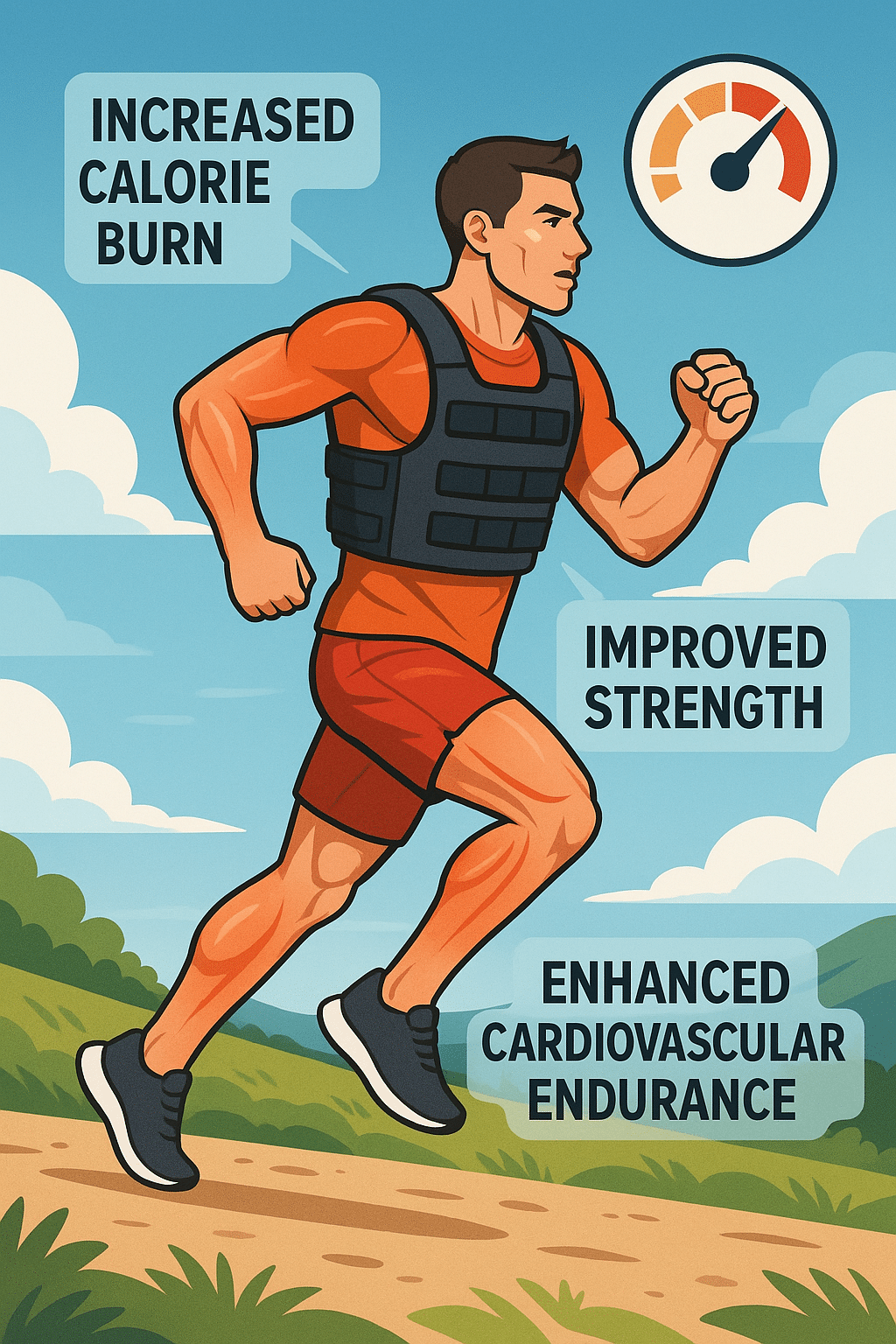
Weighted vests are wearable fitness gear designed to add extra load to your body during exercise. By increasing the weight your muscles must carry, they amplify the intensity of your workout and contribute to greater physical adaptations. For runners, incorporating a weighted vest can transform typical cardio sessions into powerful resistance training workouts that build strength, endurance, and speed.
Weighted vest technology has evolved significantly, with modern designs focusing heavily on comfort, adjustability, and safety. Unlike carrying weights in your hands or strapped irregularly, these vests distribute the weight evenly across your torso to avoid strain and support natural movement patterns. This is especially important for runners, who depend on efficient biomechanics to protect joints and muscles during repetitive motions.
Understanding Weighted Vest Technology and Design
Good weighted vests are constructed using high-quality materials such as durable neoprene, CORDURA® fabric, and breathable mesh layers. These materials offer a balance of sturdiness and comfort, meaning you can wear the vest through a variety of running workouts without excessive restriction or overheating.
Key design features typically include:
-
Adjustable Weight Pockets: Slots or compartments hold removable weights, allowing you to customize the vest’s load from as little as 5 lbs to over 40 lbs depending on the model.
-
Even Weight Distribution: Weight plates or micro-weights are arranged strategically so the extra load stays balanced, reducing pressure points and minimizing impact on posture.
-
Fit and Comfort Adjustments: Straps, elastic panels, and stretchable fabrics ensure the vest hugs your body securely but moves with you. These features prevent flapping or bouncing, which can be distracting and even cause injury.
-
Breathability: Open panels and sweat-wicking materials help ventilation to keep you cool during intense runs.
For example, the Omorpho G-Vest+ uses MicroLoad™ technology to disperse small weights evenly, enhancing comfort and natural movement—perfect for runners who want added resistance without sacrificing form.
How Weighted Vests Enhance Running Workouts
By adding external resistance, weighted vests amplify the load on your cardiovascular system and muscles. This added challenge forces your heart and lungs to work harder, boosting your aerobic capacity and overall endurance. From a muscular perspective, wearing a vest engages additional muscle fibers, especially in the core, back, and legs, which enhances strength gains and improves running power.
This dual benefit of cardiovascular and muscular conditioning makes weighted vest running an incredibly efficient workout piece. When done correctly, it can shorten training times while escalating results—a win-win for busy fitness enthusiasts.
Key Benefits of Using Weighted Vests for Running
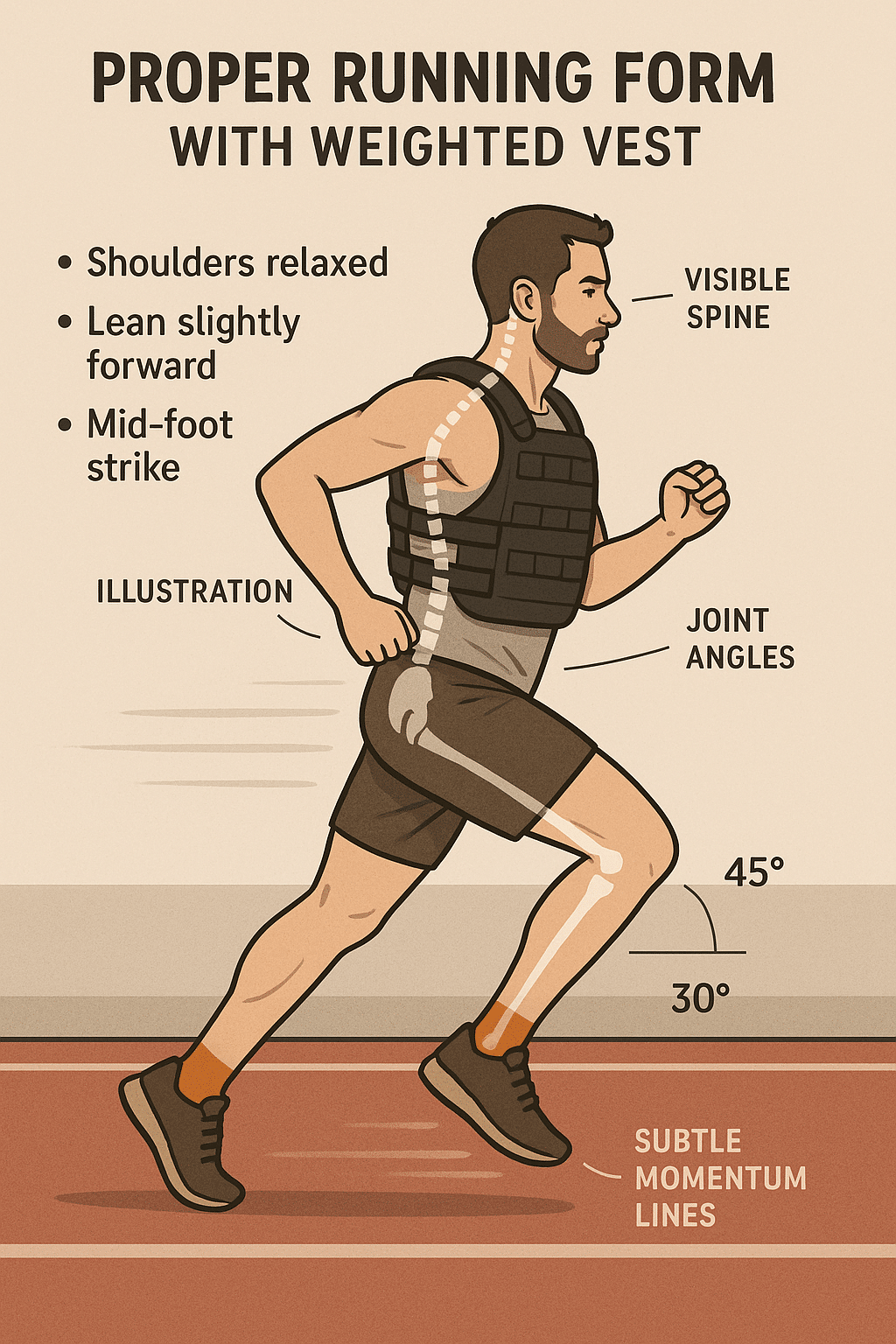
Let’s break down the five most significant benefits that weighted vests bring to your running workouts.
1. Boosting Cardiovascular Endurance
Running with a weighted vest requires your heart and lungs to pump more oxygen-rich blood to working muscles. Studies have shown that adding extra load during cardio workouts increases heart rate and oxygen consumption, simulating higher-intensity training without the need to run faster or longer.
For example, during a typical 30-minute run, wearing a moderate weighted vest (5–15 lbs) can increase your heart rate by approximately 10 to 15 beats per minute compared to a standard run. This enhanced cardiovascular load promotes improved endurance adaptations, resulting in a stronger heart and more efficient oxygen delivery.
As a practical tip, you can start with short intervals wearing your vest, gradually increasing duration as you build stamina. This method trains your cardio system safely and effectively.
2. Enhancing Muscle Strength and Running Power
The additional resistance from a weighted vest increases muscle recruitment in your legs, glutes, core, and even upper body. These muscles must work harder to maintain balance, posture, and running mechanics under load. This resistance training effect helps you build strength specific to running movements, translating into better speed and power on the road or trail.
For instance, a vest like the Aduro Sport Weighted Vest offers even weight distribution from 26 to 46 lbs, allowing runners to build leg drive and explosive force gradually. Increased muscle strength translates to improved sprinting capability and reduced fatigue during distance runs.
3. Increasing Calorie Burn and Fitness Efficiency
Weighted vest running significantly increases the number of calories burned during exercise. Carrying extra weight elevates total energy expenditure because your body expends more effort to move. This makes your workouts more efficient, helping you burn more calories in less time.
A typical runner weighing 150 pounds may burn an extra 8 to 12% more calories per mile when wearing a weighted vest with 10% of their body weight added. This effect magnifies fat burning and supports weight loss or maintenance goals effectively.
Products like the RUNmax Adjustable Weighted Vest let you tailor resistance levels making it ideal for maximizing calorie burn progressively as you improve.
4. Improving Running Biomechanics and Form Adaptation
Weighted vests encourage you to pay closer attention to your running form. Because the load is balanced predominantly on your torso, you must keep an engaged core and maintain good posture to avoid injury or discomfort. Over time, this training strengthens key stabilizing muscles and optimizes running biomechanics.
Additionally, the vest’s snug fit and minimal bounce promote natural arm swing and stride mechanics. Unlike carrying handheld weights, which can distort form, vests provide a more realistic training scenario for endurance and speed.
The Hyperwear Hyper Vest ELITE is notable for its breathable design and elastic side panels, which support freedom of movement—a must for proper form when running.
5. Supporting Progressive Overload and Injury Prevention
Progressive overload—the gradual increase of training stress—is fundamental to fitness improvements. Weighted vests allow runners to precisely control their training stimulus by adjusting the weight carried. This tailored progression prevents plateaus and keeps workouts challenging.
Moreover, consistent use strengthens supportive muscles around joints, which helps guard against common running injuries like shin splints, knee pain, and plantar fasciitis. Strengthening stabilizers with a vest enhances joint resilience to the repetitive stresses of running.
Of course, a measured approach is crucial. Starting too heavy or adding weight too fast risks overuse injuries. That’s why I recommend beginning with 5–10% of your body weight and increasing gradually while monitoring joint feedback.
Selecting the Best Weighted Vest for Running
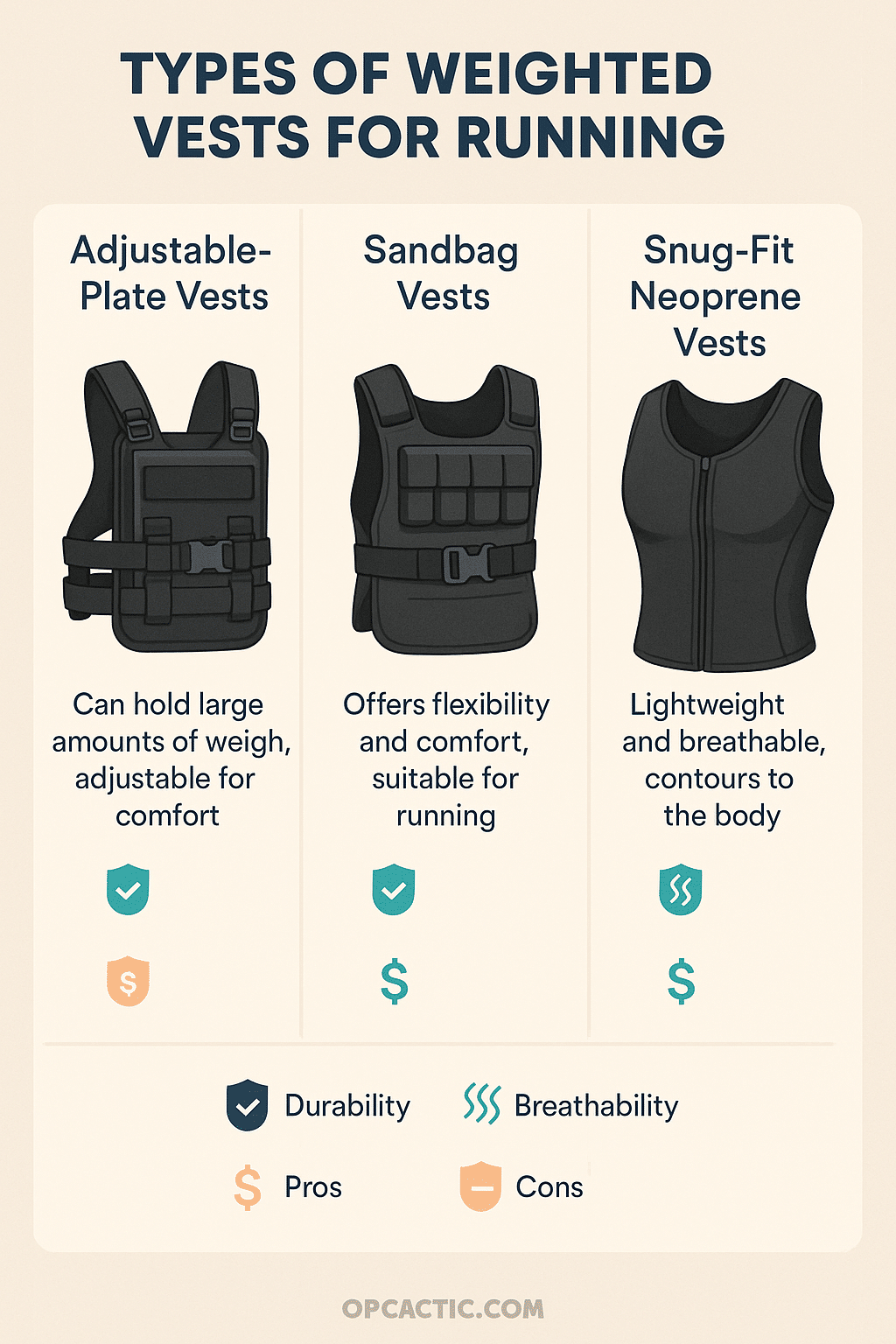
Choosing the right weighted vest makes a significant difference in your results and overall experience. Let’s dissect the critical features to consider before buying.
Adjustable Weight Options and Load Capacity
A vest with customizable weight increments is essential for progression. You want to start with a manageable load and work your way up to heavier resistance without replacing your vest.
-
The Aduro Sport Weighted Vest offers a range from 26 lbs to 46 lbs with high adjustability and is suitable for all fitness levels.
-
RUNmax provides options spanning from 12 lbs up to massive 140 lbs, suitable for beginners to elite athletes.
-
Omorpho G-Vest+ comes in lighter weights (5 to 10 lbs) perfect for those wanting subtle resistance while focusing on mobility.
Choose one that fits your current strength but allows for future increments.
Breathability, Comfort, and Fit Features
Running generates heat and sweat, so breathable materials and comfort features are a must. Look for vests with:
-
Moisture-wicking neoprene or mesh panels.
-
Adjustable straps and elastic side panels for a snug but flexible fit.
-
Minimal bulk to avoid chafing and allow a full range of motion.
The Hyperwear Hyper Vest ELITE stands out with its CORDURA® fabric, open side panels, and stretch features designed explicitly for breathability and comfort during cardio.
Durable Materials and Safety Considerations
Your vest should withstand the rigors of outdoor running and frequent sweat exposure. Durable fabrics and strong stitching prevent premature wear. Also, consider safety features like reflective strips if you run in low light.
The Zelus Weighted Vest combines durability with adjustability and is often praised for its reliable construction, making it a solid investment.
Comparing Top Weighted Vests for Running
To help, here’s a summarized comparison of some top models:
| Brand & Model | Weight Range | Key Features | Ideal For | Price Range | Where to Buy |
|---|---|---|---|---|---|
| Aduro Sport Weighted Vest | 26 to 46 lbs adjustable | Even weight distribution, neoprene, front & back pockets | All-level runners and families | Mid range | Official Aduro Sport website |
| RUNmax Adjustable Weighted Vest | 12 to 140 lbs | Highly adjustable, accessories include phone & water pockets | Beginners to advanced trainees | Budget to high | RUNmax site, Amazon, fitness stores |
| Zelus Weighted Vest | Varies (light to moderate weights) | Durability, comfort, adjustable | Fitness enthusiasts seeking durable gear | Mid range | Zelus official & Amazon |
| Omorpho G-Vest+ | 5 lbs (women), 10 lbs (men) | MicroLoad™ technology, even distribution, flexible neoprene | Runners focusing on natural movement & mobility | Premium | Omorpho official website |
| Hyperwear Hyper Vest ELITE | 10 to 25 lbs adjustable | CORDURA® fabric, breathable, reflective stripes | Runners seeking breathable, sleek design | Mid to high | Amazon, Hyperwear official site |
How to Use Weighted Vests Safely in Running Workouts
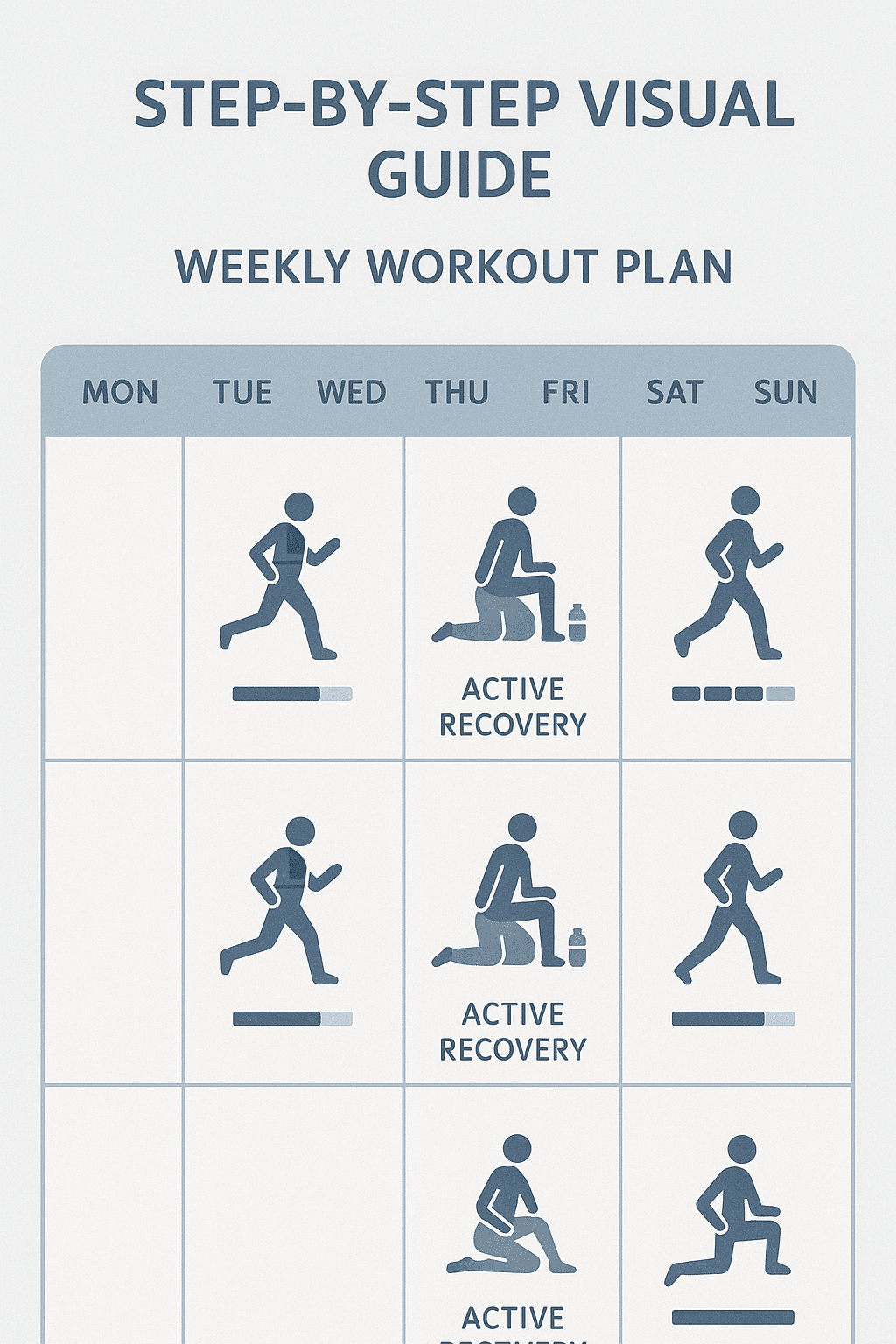
Using weighted vests properly is critical to avoid injury and maximize benefits. Here are expert tips based on research and professional guidelines.
Recommended Weight Guidelines and Starting Points
Most trainers advise starting with around 5-10% of your body weight. For example, if you weigh 150 lbs, begin with 7.5 to 15 lbs. Wearing too heavy a vest initially can compromise your form and increase injury risk.
Start with short runs or interval training sessions, then gradually increase both duration and weight. Listen to your body closely—soreness is normal, but pain is not.
Maintaining Proper Running Form With Added Weight
Carry yourself upright with an engaged core and relaxed shoulders. Weighted vests add load to your upper body, so you’ll need to consciously tighten your midsection to protect your spine.
Keep stride length and cadence consistent. Avoid overstriding, which places excess joint stress that weighted vests can exacerbate.
If you notice altered gait or discomfort, reduce the weight or shorten your training sessions until you rebuild form.
Avoiding Common Injuries and When to Consult a Professional
Weighted vest running can increase joint impact, so prioritize:
-
Monitoring knee, hip, and ankle sensations.
-
Incorporating cross-training and strength work to support joints.
-
Ensuring adequate warm-up and cooldown stretches.
If you experience persistent pain or have pre-existing conditions, it’s wise to consult a physical therapist or sports medicine expert.
Incorporating Weighted Vests into Running Programs
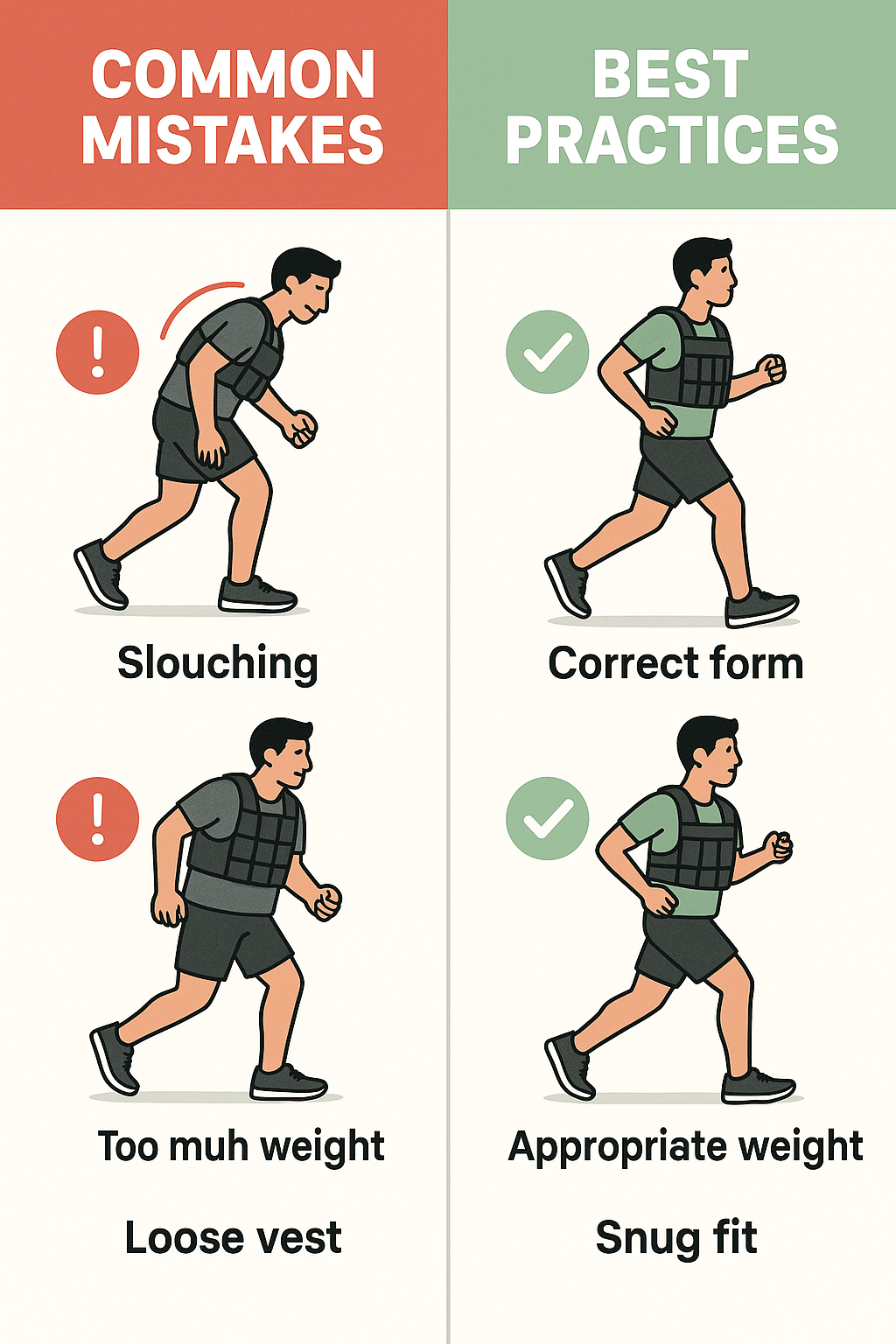
Whether you’re a novice or an advanced athlete, structured programs help you reap the most from weighted vest running.
Weighted Vest Running Workouts for Beginners
Start with intervals—run 1 minute with the vest on, walk 1-2 minutes without it. Repeat 5 times. Focus on maintaining good form, breathing, and comfort.
Progress to longer continuous runs with light weight and gradually increase weight after consistent sessions.
Advanced Weighted Vest Training for Endurance and Speed
Incorporate hill sprints wearing your vest to simulate resistance running, boosting power and speed. Use tempo runs or fartlek sessions to challenge cardiovascular capacity further.
Run cadence drills to maintain quick, controlled steps despite added load.
Combining Weighted Vest Running With Strength and Cross-Training
Weighted vest benefits multiply when paired with complementary strength workouts—think squats, lunges, and core exercises. These improve muscular balance and reduce injury risks.
Cross-train with biking or swimming on non-weighted vest days to maintain aerobic fitness without excessive joint strain.
Recovery Strategies After Weighted Vest Running Sessions
Weighted vest workouts are intense, so solid recovery is key to progress.
Muscle Recovery Techniques and Stretching
Incorporate dynamic stretches post-run focusing on hips, calves, quads, and hamstrings. Foam rolling can alleviate tightness and promote blood flow.
Schedule rest or low-intensity days between weighted runs to allow tissue repair.
Monitoring Joint Health and Managing Impact Stress
Apply ice or compression if you notice joint inflammation. Use supportive footwear with good cushioning to absorb impact.
Pay attention to recurring discomfort and adjust training load accordingly.
Nutrition and Hydration Tips for Optimal Recovery
Refuel with a balanced post-run meal containing carbs and protein to support muscle repair. Stay hydrated to promote circulation and metabolic waste removal.
Tracking Progress and Maximizing Results
Use technology to stay on top of your training and avoid plateaus.
Using Fitness Apps and Wearables to Monitor Workouts
Devices like Garmin or Fitbit can record heart rate, pace, and distance during weighted runs, helping you track adaptions.
Apps allow structured workout planning and progression tracking to fine-tune your regimen.
Adjusting Weight and Intensity Based on Performance
Based on your performance data, increase vest weight by small increments when runs feel easier or when heart rate at a certain pace decreases.
Mix weighted and non-weighted runs to balance intensity and recovery.
Future Trends and Innovations in Weighted Vest Technology for Runners
The landscape of weighted vest design continues to evolve rapidly.
Emerging Materials and Designs for Enhanced Comfort and Performance
Lightweight, flexible fabrics that mimic skin stretch more naturally are gaining traction, improving comfort and reducing overheating.
New weight distribution systems like Omorpho’s MicroLoad™ demonstrate innovation in maximizing resistance while preserving mobility.
Integration with Smart Technology and Training Apps
Look forward to vests embedded with sensors that provide real-time feedback on posture, weight distribution, and run metrics—paving the way for personalized, data-driven training.
FAQs About Weighted Vests for Running
1. What is the optimal weight for running with a weighted vest?
Starting with 5-10% of your body weight is usually ideal. This range balances added resistance without compromising running form or increasing injury risk.
2. How do weighted vests improve running performance?
They increase cardiovascular load and muscle recruitment, enhancing endurance, strength, and speed when integrated into a consistent training regimen.
3. Can weighted vests cause injury while running?
If used improperly—too heavy too soon or with poor form—they can increase joint stress and injury risk. Proper progression and attention to technique are essential.
4. Are weighted vests suitable for beginner runners?
Yes, but beginners should start with lighter weights and shorter sessions. Gradual adjustment ensures safe adaptation.
5. How should I recover after running with a weighted vest?
Incorporate proper stretching, foam rolling, rest days, adequate hydration, and balanced nutrition to support muscle and joint recovery.
Quick Takeaways/Key Points
- Weighted vests add resistance that boosts cardiovascular endurance, muscle strength, and calorie burn.
- Proper vest fit, adjustable weight, and breathability enhance workout comfort and safety.
- Starting with 5–10% body weight and progressing slowly minimizes injury risk.
- Combining weighted vest running with strength and cross-training maximizes benefits.
- Recovery is critical—use stretching, hydration, and rest to optimize gains.
- Advanced vest designs like Omorpho G-Vest+ promote natural motion with innovative weight distribution.
- Tracking progress with fitness wearables helps tailor your workout progression effectively.
Conclusion
Incorporating weighted vests for running into your training arsenal can substantially transform your workouts. From elevating your cardiovascular endurance to boosting muscular power and calorie burn, the benefits extend far beyond what regular running offers. However, the key to reaping these rewards lies in choosing the right vest, using it safely, and blending weighted runs with a well-rounded fitness regimen that includes strength training and recovery protocols.
Whether you opt for the versatility of the Aduro Sport Adjustable Weighted Vest or the cutting-edge comfort of the Omorpho G-Vest+, remember that consistency and gradual progression are your best friends. So, why not take the plunge today? Grab a quality weighted vest, start slow, and watch as your running performance hits new heights.
Ready to experience a running workout like no other? Explore your weighted vest options through trusted brands linked here and step into a stronger, faster, and more resilient version of yourself!

